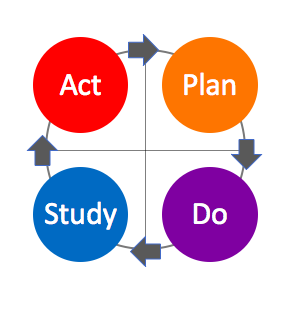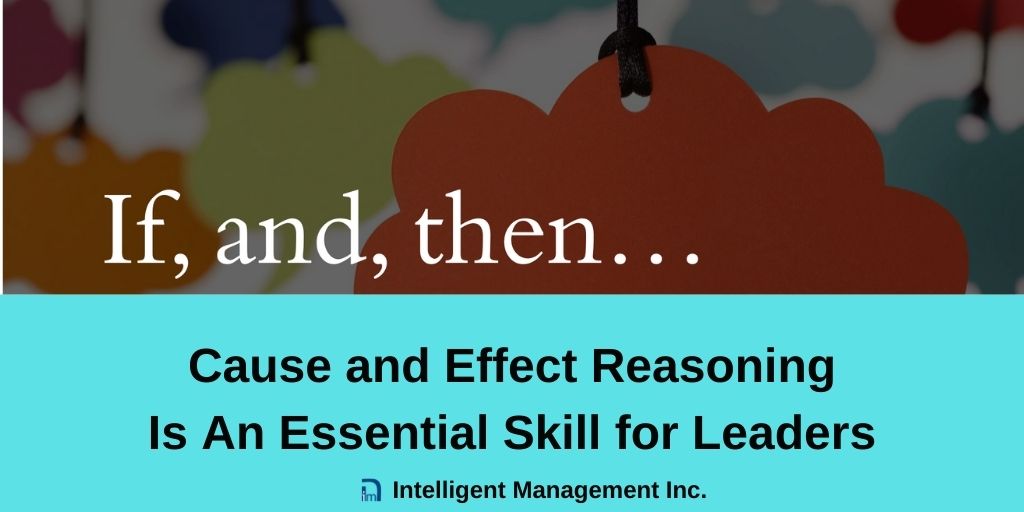An article in the Harvard Business Review draws attention to the problem of confusing correlation with causation.
“Western management has failed to understand cause and effect” W. Edwards Deming
Mistaking correlation for cause can be dangerous.because it prevents us from understanding reality. Most importantly, if we do not nurture the ability to think cause and effect, we put our very lives at risk. Without rigorous cause and effect reasoning, decisions, policies and actions are put into motion without an understanding of how people and situations will be affected. It is scary to think that this ability is not considered a necessary leadership skill. Dr. Deming used to warn about the consequences (cause and effect) of seemingly simple actions: “if we kick a dog in the street, we are responsible for the attack that, probably out of fear, the dog will take against the next passerby”.
And nobody wants to see a sad dog.

Photo by Taylor Deas-Melesh on Unsplash
Our thinking shapes our reality
There is no effect without a cause. This is the basis of the scientific method, and the aim of science is always to discover underlying causes. Without that knowledge, we are exposed to an array of ‘symptoms’ we are unable to decipher, predict, control, or prevent. In other words, we are in the Dark Ages.
The ability to reason cause-and-effect is foundational for any meaningful change we decide to bring to our life. This is even more so if the change we want to effect concerns a complex entity like a company.
As a result of past experiences, our minds create limitations that we can call “non-physical constraints”. Some of these constraints are very helpful and make our life possible; restraints can play an extremely important part in our lives just as much as the possibility to lift them when appropriate. These limitations, or mental models, do not belong only to individuals but also to organizations; the field of forces created by the structure of the organization, the paradigms of its founders and directors and the socio-political environment at large do shape these constraints. The issue, for individuals and organizations alike, is not so much the existence of these constraints but rather acknowledging that they are such; unfortunately, far too often, these mind-created constraints become the “reality” of the organization. The life cycle of companies, and even entire industries, can be measured in terms of their appreciation (or lack of it) for these deeply rooted images of the world that over the years we have come to call “cognitive constraints”. What can we do about it?

Photo by Ye Jinghan on Unsplash
Systemic cause and effect Thinking Processes
D.r Eliyahu Goldratt developed The Thinking Processes to fortify in people the ability to reason cause-and-effect. This is a daunting task because our mind simply does not work that way. In our daily lives, most of the time we “re-act” instead of acting and we very rarely understand the full spectrum of the consequences of our “re-actions”. Simply put, human cognition is heavily constrained in understanding the network of interdependencies that our actions trigger.
The Thinking Processes may, at first sight, seem simple because they are made up of words, but rigorously tracing the cause-effect relationships between our intuition, our current reality, and the mental models that keep us trapped in that reality is intellectually demanding and mentally tiring. Most people are simply not accustomed to the level of focus, analysis and open-mindedness that a precise use of the Thinking Processes requires. This is not to discourage anyone, on the contrary; this is to help anyone who is serious about transforming their company to adopt the correct approach to something which is truly, literally, life changing.
The Thinking Processes help us analyze our current reality and develop systemic solutions for a more desirable future reality. This includes the orderly, relentless identification of all the cause-and-effect relationships that are likely to shape the future if certain actions are carried out successfully. Similar to Deming’s Plan, Do, Study, Act (PDSA) cycle, it prompts a rigorous, scientific investigation of the subject matter.

The Decalogue
The last 20 years have seen an exponential growth in the planetary interconnections of which we are all part. The pandemic has made this evident, along with the related supply chain disruptions. The artificial walls built by our inability to conceive and experience higher levels of interdependency are crumbling. It is time for the science of management to play its part in helping our lives to be meaningful in the work place.
The Decalogue is a science-based methodology that equips leaders and managers with the insight and foresight that comes from a systemic approach. It is founded on cause and effect logic that views an organization as a system, i.e. a set of components that work together to achieve the goal of the system. By understanding a company as a system and applying principles of systems theory, it enables whole system optimization.
This new, systemic approach to management demonstrates how choosing a strategic Constraint and managing Variation provide the foundations for sustainable growth for any company. The Ten Steps of the Decalogue equip business owners and leaders with a clear and focussed path to achieve the maximum value with the resources available. The steps combine the essence of Deming – a common goal and focus on processes and variation – with the essence of Goldratt’s message – focussing on the one factor that determines the pace of throughput and on overcoming the cognitive barriers to change. Continuous improvement and continuous innovation becomes part of the day-to-day.
A leader of today must construct a theory for today’s world, and must develop an appropriate system for management of his theory. Why? Because without theory there is no learning, and thus no improvement – only motion. The theory that he requires is knowledge about a system and optimization thereof. W. Edwards Deming
The Decalogue is an original contribution to the Theory of constraints and organizational science. Since 1999, it has been used by dozens of companies to achieve fundamentally more with the resources available. You can read about the Decalogue steps in more detail here: Decalogue in More Detail.
Be kind
Learning to think cause-and-effect is essential for decision makers and for understanding any market. Doing so with a systemic method is even more powerful. This is what the Thinking Processes from the Theory of Constraints are for and it is what we base all our work on at Intelligent Management. And let’s not kick any dogs who might then bite someone out of fear. Acts of kindness, whether to people or animals, can be the cause of many unexpected positive effects, both for the giver and the receiver. Everybody wins.

Photo by Tom Parsons on Unsplash
Intelligent Management works with decision makers with the authority and responsibility to make meaningful change. We have helped dozens of organizations to adopt a systemic approach to manage complexity and radically improve performance and growth for 25 years through our Decalogue management methodology. The Network of Projects organization design we developed is supported by our Ess3ntial software for multi-project finite scheduling based on the Critical Chain algorithm.
See our latest books Moving the Chains: An Operational Solution for Embracing Complexity in the Digital Age by our Founder Dr. Domenico Lepore, The Human Constraint – a digital business novel that has sold in 43 countries so far by Dr. Angela Montgomery and ‘Quality, Involvement, Flow: The Systemic Organization’ from CRC Press, New York by Dr. Domenico Lepore, Dr. .Angela Montgomery and Dr. Giovanni Siepe.







Leave a Reply